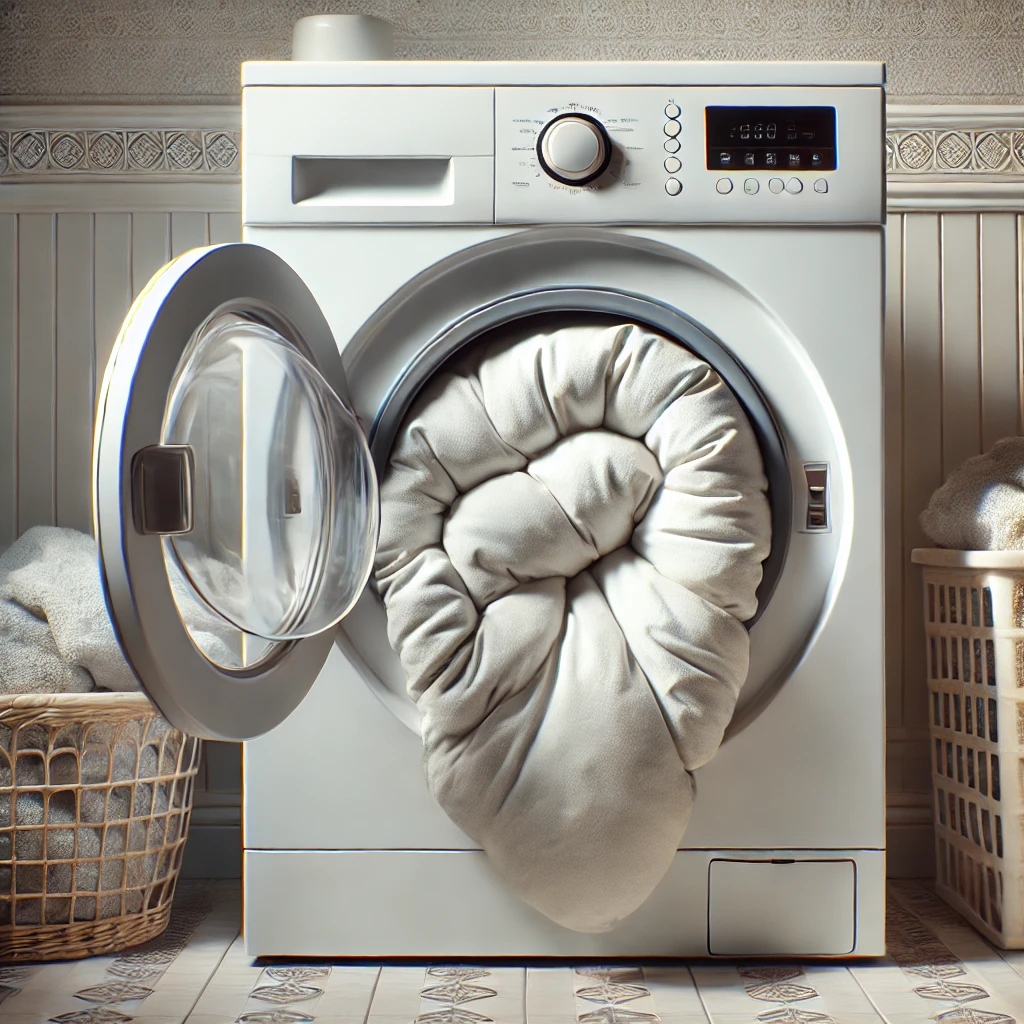
Can You Put a Duvet in the Tumble Dryer? (Safe Settings Guide)
After washing your duvet, the next question is whether you can tumble dry it. Properly drying a duvet can be tricky because of its size and delicate filling, but the good news is that, in most cases, you can tumble dry your duvet. Here’s everything you need to know about tumble drying a duvet safely and effectively.
Can You Tumble Dry a Duvet?
Yes, most duvets can be tumble dried, but there are a few important factors to consider, including the type of duvet and its filling. Whether it’s down, synthetic, or feather-filled, proper care is essential to maintain the duvet’s shape and insulation.
Steps to Safely Tumble Dry Your Duvet
1. Check the Care Label Before drying, always check the care label on your duvet. It will provide essential information on the appropriate drying method. Some duvets may require air drying or low heat, so it’s important to follow the manufacturer’s recommendations.
2. Use a Large-Capacity Dryer Duvets are bulky, so make sure your tumble dryer has enough room to accommodate the duvet without overcrowding. If your home dryer isn’t large enough, consider using a laundrette with industrial-sized machines.
3. Use Low or Medium Heat Duvets, especially those with down or feather fillings, can be sensitive to high heat. Set your tumble dryer to a low or medium heat setting to avoid damaging the filling or fabric. High heat can cause shrinkage or clumping of the filling.
4. Add Dryer Balls or Tennis Balls To prevent the filling from clumping, toss in a few dryer balls or clean tennis balls. These will help keep the duvet fluffier by evenly redistributing the filling as it dries.
5. Dry It Thoroughly Make sure your duvet is completely dry before taking it out of the dryer. Duvets can trap moisture inside, which can lead to mould or mildew if not dried thoroughly. Run additional cycles if necessary, checking the duvet in between for any damp spots.
6. Fluff and Shake After each drying cycle, take the duvet out and give it a good shake and fluff to redistribute the filling. This helps ensure that the duvet dries evenly and maintains its shape.
7. Air It Out If possible, once the duvet is dry, hang it in a well-ventilated area or outside on a sunny day for a few hours. This allows any residual moisture to evaporate and keeps your duvet smelling fresh.
What About Different Types of Duvets?
Down-Filled Duvets
- Drying Tip: Always use a low heat setting. Down is delicate and can be damaged by high heat.
- Avoid Clumping: Use dryer balls or tennis balls to keep the down evenly distributed.
Feather-Filled Duvets
- Drying Tip: Like down, feather-filled duvets should be dried on a low heat setting.
- Extra Drying Time: Feather duvets may take longer to dry because feathers can trap moisture, so be patient and run multiple drying cycles if needed.
Synthetic Duvets
- Drying Tip: Synthetic duvets are generally more heat-resistant, so a medium heat setting can be used. However, always check the care label.
- Faster Drying: Synthetic fillings tend to dry faster than down or feather fillings, so you may not need as many drying cycles.
Can You Line Dry a Duvet Instead?
If you prefer not to tumble dry your duvet, you can air dry it. However, this can take much longer, especially with heavy duvets like down or feather-filled ones. Choose a sunny, breezy day to line dry your duvet, and be sure to turn and fluff it regularly to ensure even drying. If air drying indoors, make sure the room is well-ventilated to avoid musty odours or mildew.
Conclusion
Tumble drying your duvet is generally safe, as long as you follow the proper steps and take care to use a low or medium heat setting. Adding dryer balls can help prevent clumping, and it’s crucial to ensure the duvet is completely dry to avoid moisture issues. Always check the care label, and if you’re unsure, air drying is a good alternative, albeit more time-consuming. With these tips, you can keep your duvet fluffy, fresh, and ready for use.

